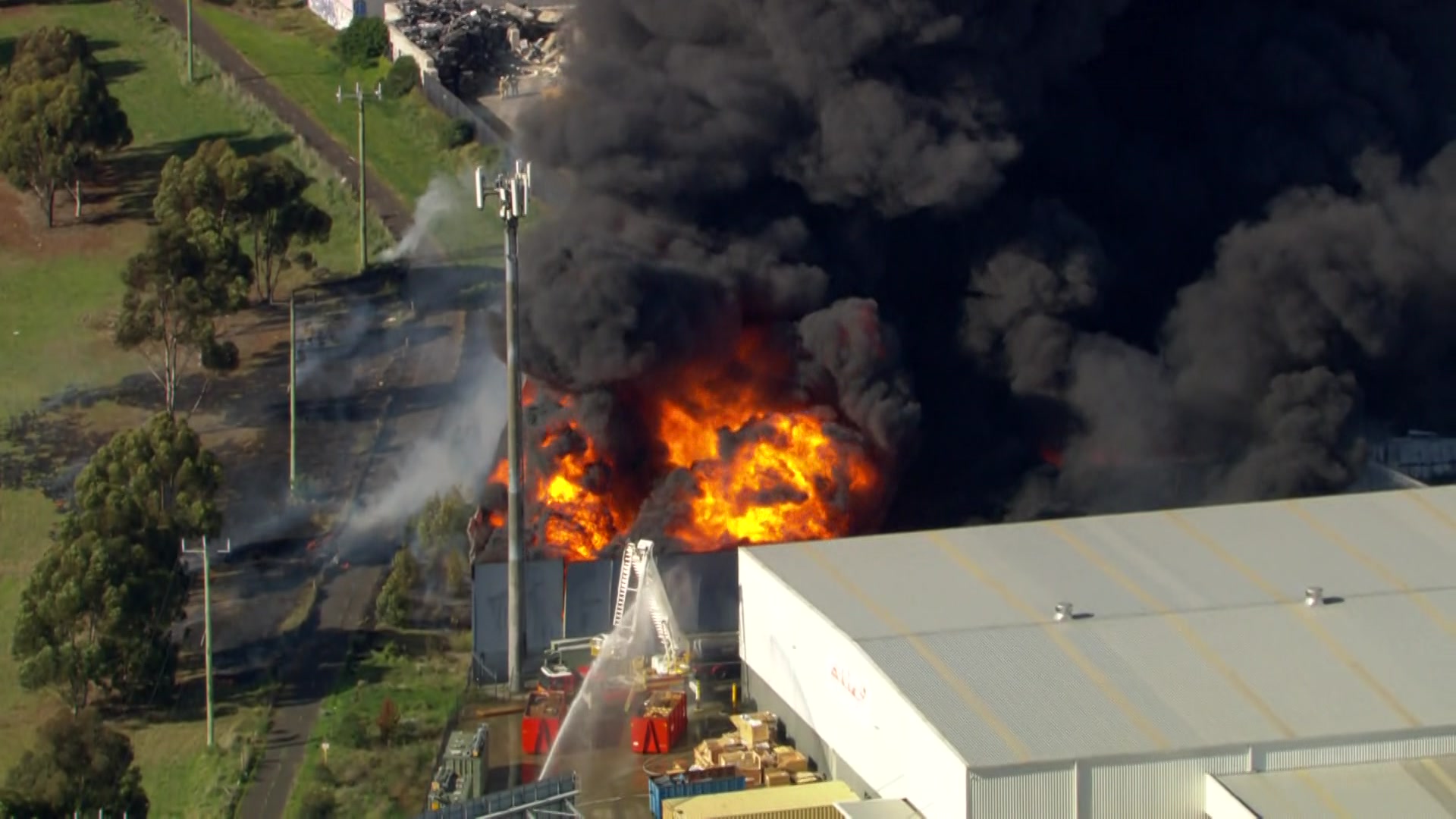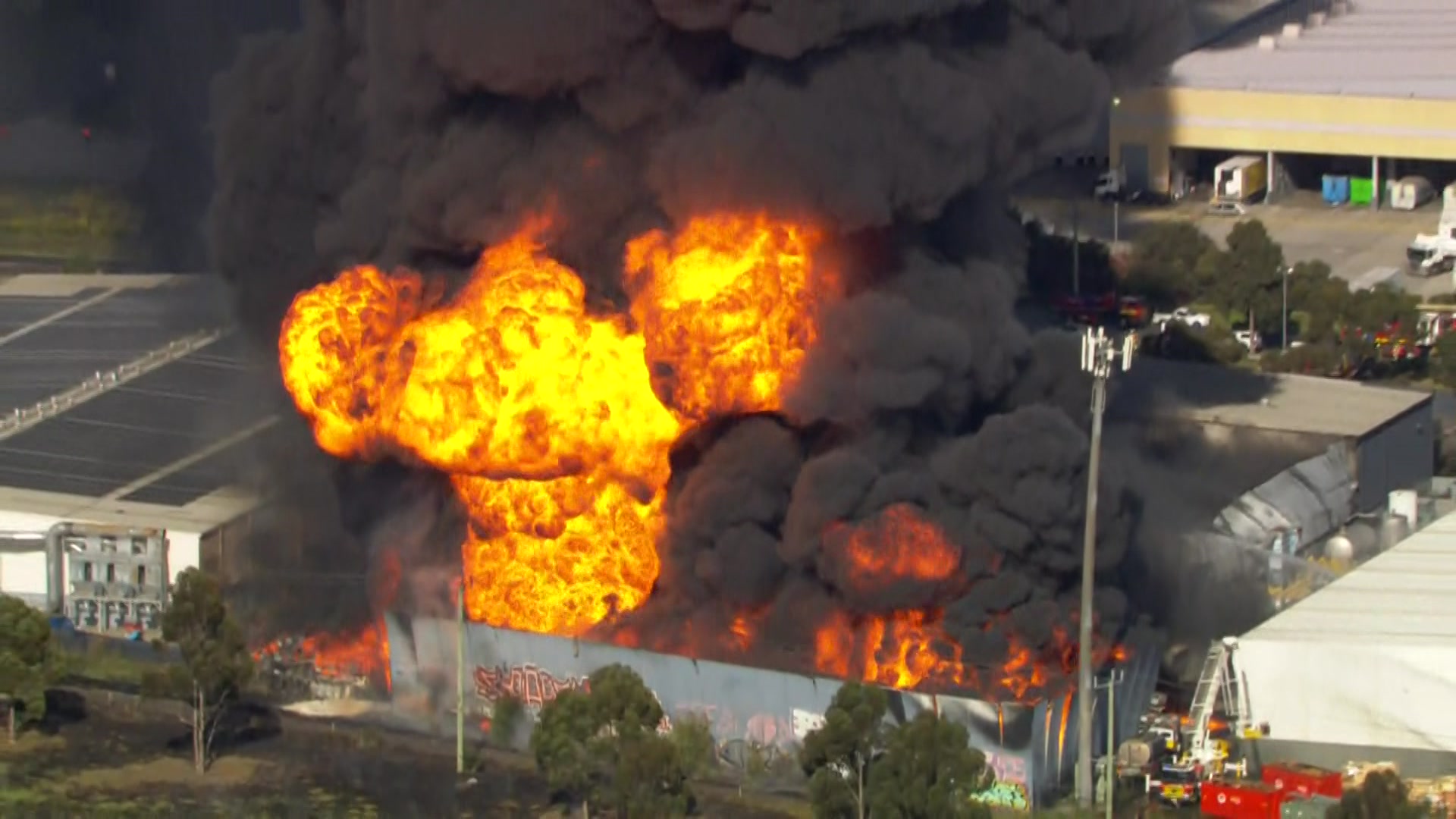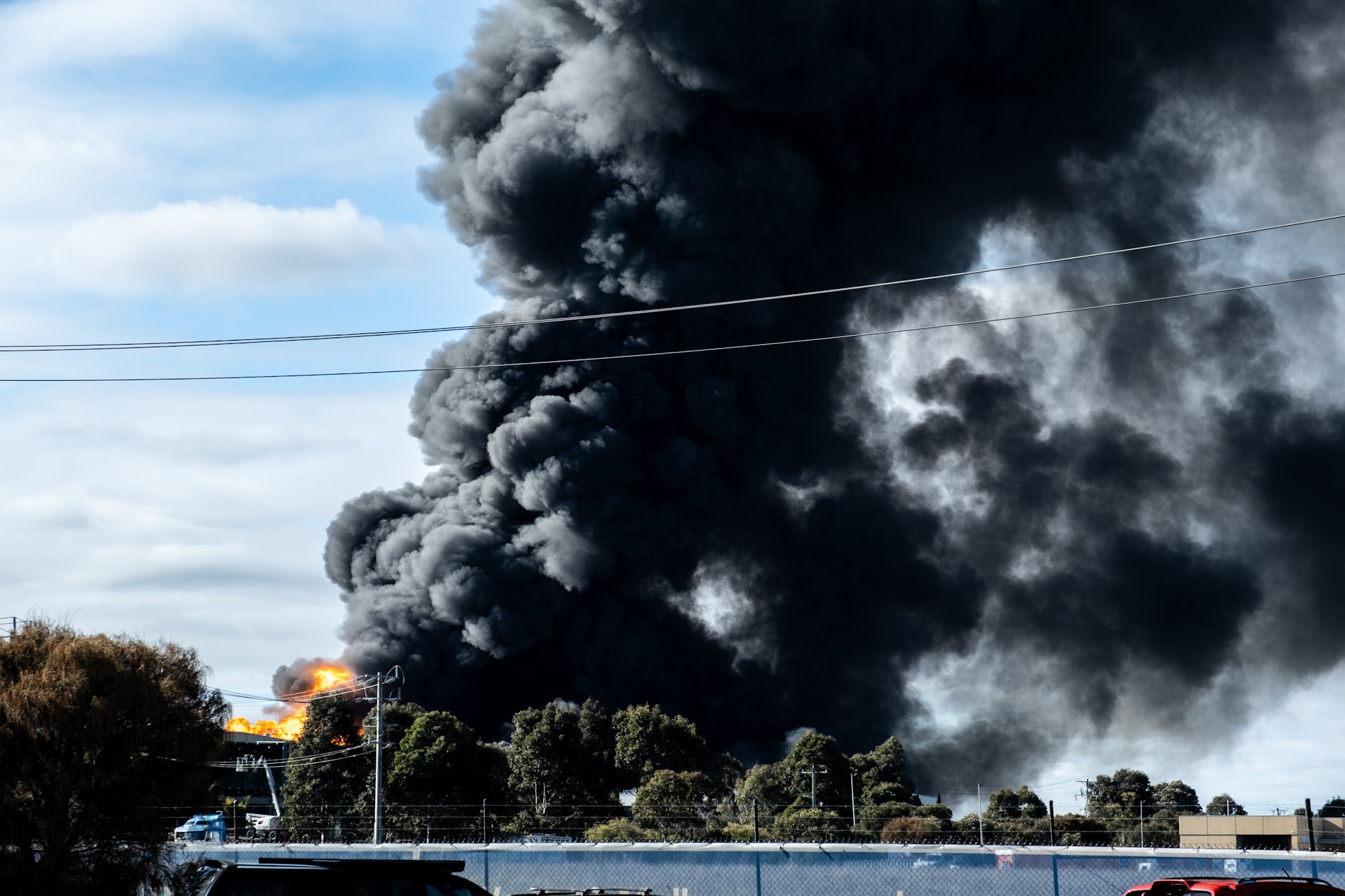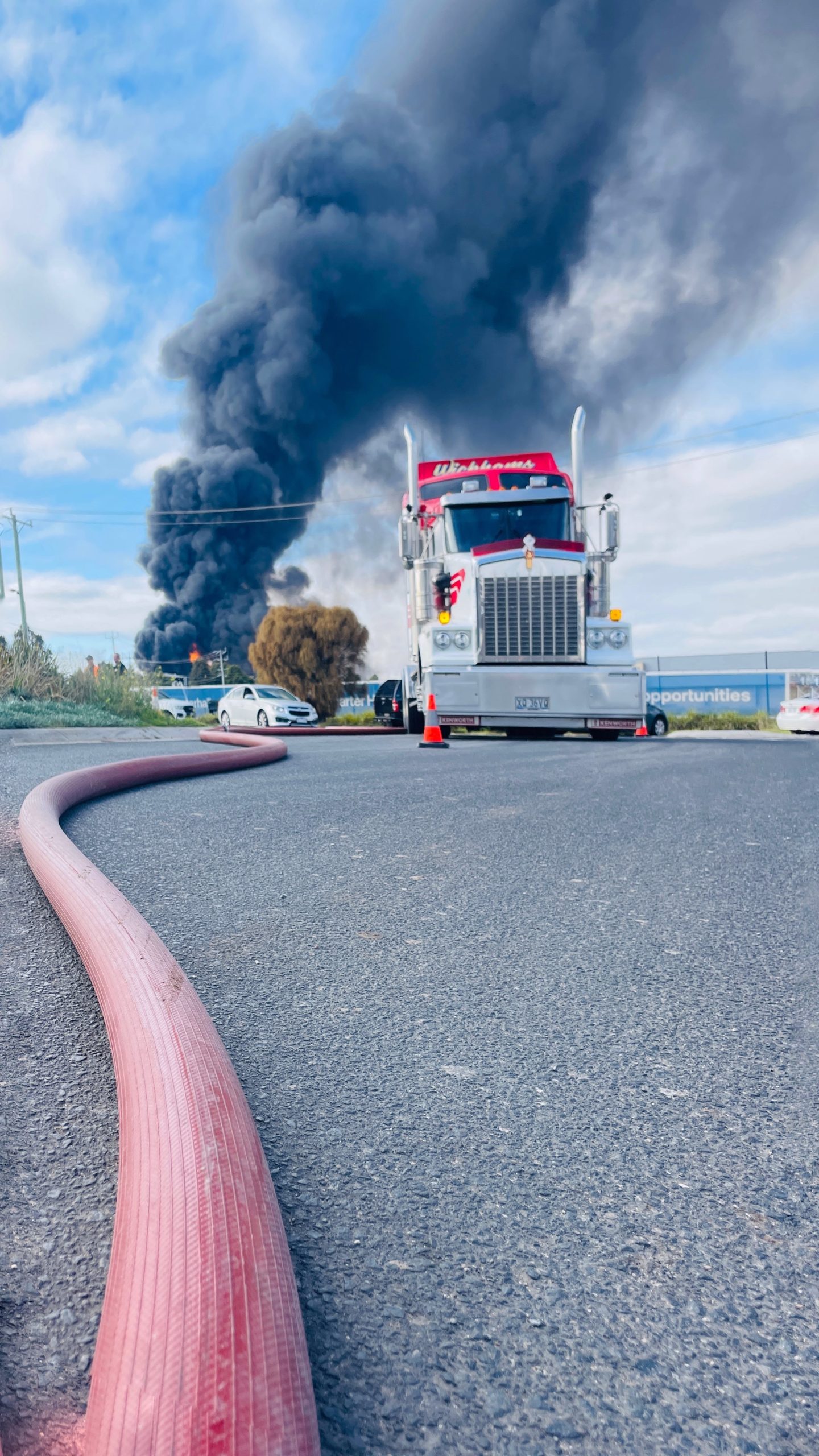Massive Industrial Fire Engulfs Melbourne’s Derrimut: A Deep Dive
This week, a dramatic incident unfolded in the western suburbs of Melbourne, as a large industrial fire erupted at a factory in Derrimut, sending towering clouds of dark smoke billowing into the skyline. This significant event has not only prompted one of the most extensive firefighting operations seen in Victoria in recent years but also raised serious concerns about safety protocols and environmental impacts. With authorities warning that the clean-up and recovery could take weeks, this incident has drawn attention to the inherent risks associated with industrial chemical storage.
A Fire of Unprecedented Scale
The fire broke out on Wednesday morning at a facility located on Swann Drive, which is situated within an industrial zone populated by warehouses, transport depots, and distribution centers. Fire Rescue Victoria (FRV) confirmed that several chemical storage drums within the facility ignited, leading to explosive bursts of flames and debris. Deputy Commissioner Michelle Cowling reported that firefighters received calls about the rapidly spreading flames shortly after 11 a.m., and within moments, thick smoke became visible from miles away. Residents across Melbourne’s western suburbs were alarmed as they witnessed the dark plume stretching across the sky.

Describing the situation, Cowling stated, “This was an aggressive fire requiring a large-scale response. The warehouse contained a range of chemicals, and as a result, our crews had to take every precaution to protect both themselves and the wider community.” The scale of the operation was unprecedented, with over 180 firefighters deployed to the scene, supported by aerial units and numerous fire trucks to combat the fierce flames. This massive undertaking required coordination among various emergency services, demonstrating the urgency and complexity of the situation.
Emergency Response and Community Impact
As the fire raged, authorities acted quickly to ensure public safety. Factories and offices in the immediate vicinity were evacuated, with major roads, including sections of the Western Freeway, being closed to direct traffic away from the danger zone. This decision, however, led to significant delays for commuters during the busy afternoon hours. Power outages in the surrounding suburbs further complicated the situation, disrupting traffic signals and contributing to congestion. Local businesses faced disruptions as employees were unable to return to work, adding to the broader economic impact of the incident.

Witnesses described chaotic scenes as containers and barrels inside the warehouse overheated and exploded, sending fragments flying. Trent Chamberlain, a worker from a nearby office, recounted, “Every few minutes, there was another burst that went high into the air. The smoke was thick and heavy — it was impossible to miss.” Even residents located as far as 20 kilometers from the fire site reported seeing the dense smoke against the backdrop of the afternoon sky. Fortunately, despite the scale of the fire and the hazardous materials involved, authorities confirmed that there were no injuries among factory workers or local residents. This fortunate outcome highlights the effectiveness of the emergency response, which prioritized public safety swiftly and efficiently.
Environmental Concerns and Safety Precautions
As smoke clouded the atmosphere, the Environment Protection Authority (EPA) swiftly issued warnings for the surrounding suburbs. Residents were advised to stay indoors, close doors and windows, and turn off any heating or cooling systems that might draw in outside air. The EPA deployed monitoring units to evaluate air quality and warned those with respiratory sensitivities to take necessary precautions. While the smoke was expected to clear as wind conditions changed, the immediate danger raised alarm about the potential long-term effects on the community. This situation illustrates the critical need for timely communication from authorities to keep residents informed and minimize health risks.

Additionally, the environmental ramifications of the fire were under scrutiny. The factory was known to store substantial quantities of hazardous materials, including kerosene and ethanol. When exposed to high temperatures and water from firefighting efforts, there was a significant risk of chemical runoff contaminating nearby creeks and storm drains. EPA officials collaborated with Melbourne Water to contain any contaminated runoff and prevent it from entering local waterways, employing trucks and pumps to manage excess water effectively. The proactive measures taken by these agencies underscore the importance of environmental protection, particularly during such crises.
Investigating the Cause and Future Implications
As the immediate firefighting efforts transitioned to recovery, authorities began to focus on investigating the cause of the fire. Although the exact reason remains unclear, initial assessments suggest that it was not a deliberate act. Cowling emphasized the importance of a thorough investigation to determine the circumstances leading to the fire, stating, “It’s essential that we understand what occurred so that measures can be implemented to mitigate similar risks in the future.” WorkSafe Victoria is also anticipated to conduct a review as part of its oversight responsibilities for industrial sites. This inquiry aims to identify potential lapses in safety protocols that could have contributed to this catastrophic event.

Looking ahead, the recovery process from this incident is expected to be lengthy. While firefighters have largely contained the flames, the aftermath will involve environmental clean-up, workplace safety inspections, and community reassurance initiatives. Emergency services continue to monitor the site to prevent any chance of reignition while keeping the local residents informed through regular updates on air quality and traffic conditions. This communication is vital in maintaining public trust and ensuring that residents feel safe in their environment as recovery efforts unfold.
Conclusion: A Call for Stricter Safety Measures
The Derrimut fire has served as a stark reminder of the potential dangers posed by large chemical storage facilities. As Melbourne has witnessed a series of industrial fires in recent years, the event has reignited discussions around the need for stricter safety regulations and enforcement. Community members are rightfully concerned about the safety protocols in place at industrial sites, and experts have echoed the call for stronger preventive measures to avert such incidents in the future. It highlights the essential role of local and state governments in ensuring that industrial operations adhere to rigorous safety standards.
As the situation continues to unfold, the focus remains on ensuring the safety of both the environment and the local community. The lessons learned from this incident will undoubtedly shape future policies and practices in industrial safety, with the hope that such a large-scale fire will not occur again. The incident serves as a catalyst for change, emphasizing the need for robust regulations and proactive safety measures to protect communities from the risks associated with industrial operations. In doing so, Melbourne can strive towards a safer future for its residents and its environment.

















